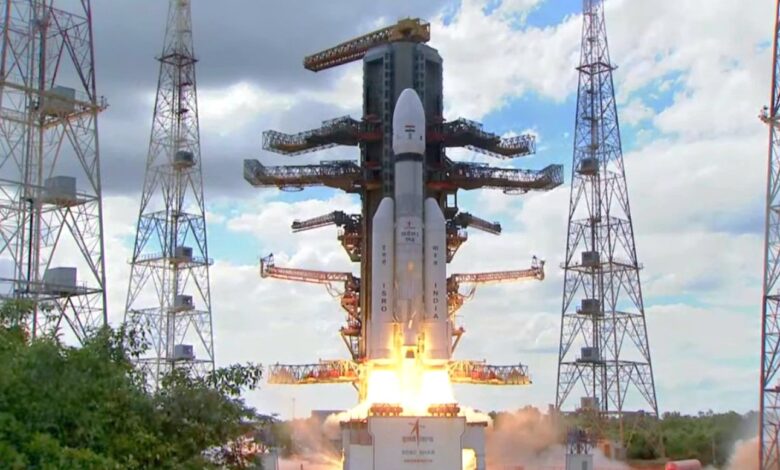ISRO’s LVM3 M4 Vehicle Successfully Launches Chandrayaan-3 into Orbit

In a remarkable achievement, the Indian Space Research Organisation (ISRO) has successfully launched Chandrayaan-3 into orbit using the LVM3 M4 vehicle. Following a series of precise orbit raising maneuvers, Chandrayaan-3 is now on track to be positioned into the Lunar Transfer Trajectory. Over the course of several weeks, the mission will traverse a distance of more than 300,000 km, gradually making its way towards the Moon. Equipped with cutting-edge scientific instruments, this mission aims to conduct an in-depth study of the lunar surface, significantly contributing to our understanding of Earth’s celestial neighbor.
Chandrayaan-3 represents a significant advancement from its predecessor, Chandrayaan-2, as it seeks to demonstrate end-to-end capabilities for safe landing and roving on the lunar surface. The mission comprises a Lander module and a Rover configuration, which will be launched by the LVM3 from the Satish Dhawan Space Centre (SDSC) SHAR in Sriharikota. The propulsion module will transport the Lander and Rover configuration until reaching a 100 km lunar orbit. Additionally, the propulsion module carries the Spectro-polarimetry of Habitable Planet Earth (SHAPE) payload, designed to study the spectral and polarimetric measurements of Earth from the lunar orbit.
The Lander module includes several scientific payloads, such as Chandra’s Surface Thermophysical Experiment (ChaSTE) for thermal conductivity and temperature measurements, the Instrument for Lunar Seismic Activity (ILSA) for monitoring seismicity, and the Langmuir Probe (LP) to estimate plasma density variations. Furthermore, a passive Laser Retroreflector Array from NASA has been included for lunar laser ranging studies.
The Rover module is equipped with the Alpha Particle X-ray Spectrometer (APXS) and Laser Induced Breakdown Spectroscope (LIBS) to analyze the elemental composition near the landing site.
Chandrayaan-3’s mission objectives are to demonstrate safe and soft landing on the lunar surface, showcase rover mobility on the moon, and conduct in-situ scientific experiments. To achieve these objectives, the Lander module incorporates advanced technologies such as altimeters (laser and RF-based), velocimeters (laser Doppler and horizontal velocity camera), inertial measurement systems (laser gyro and accelerometer package), propulsion systems (800N throttleable liquid engines and attitude thrusters), navigation, guidance and control systems, hazard detection and avoidance cameras, and a landing leg mechanism.
To validate these advanced technologies, various tests have been planned and successfully executed on Earth, including integrated cold tests using a helicopter as a test platform, integrated hot tests with closed-loop performance evaluations, and Lander leg mechanism performance tests on a lunar simulant test bed.
The launch of Chandrayaan-3 signifies a significant leap forward in India’s space exploration endeavors and showcases ISRO’s dedication to pushing the boundaries of scientific discovery. The mission holds immense promise in advancing our understanding of the Moon and setting the stage for future lunar exploration endeavors.




